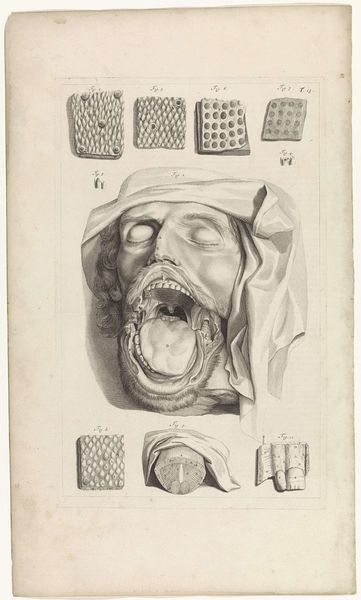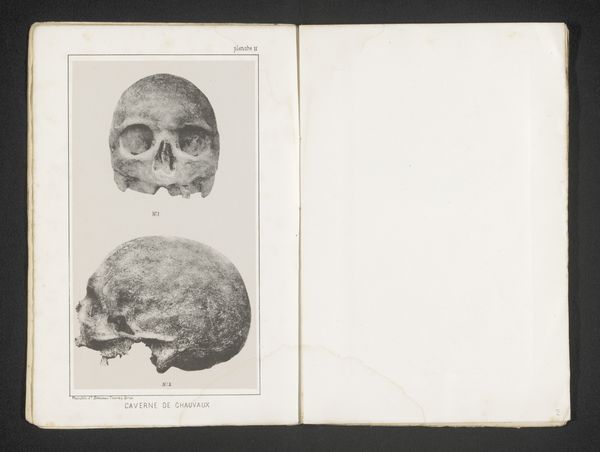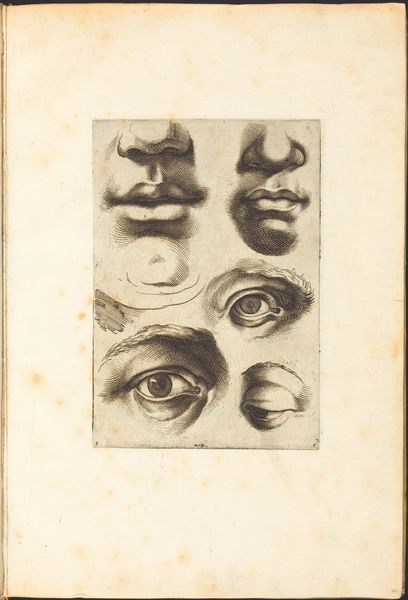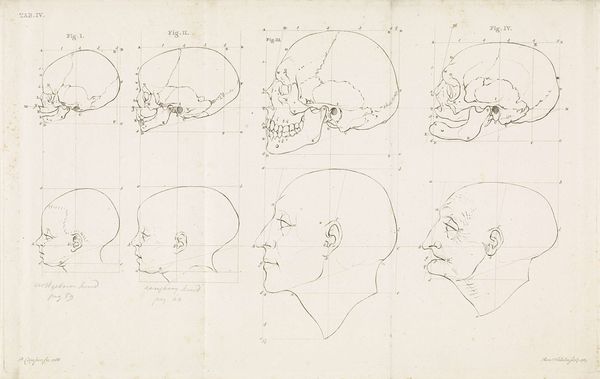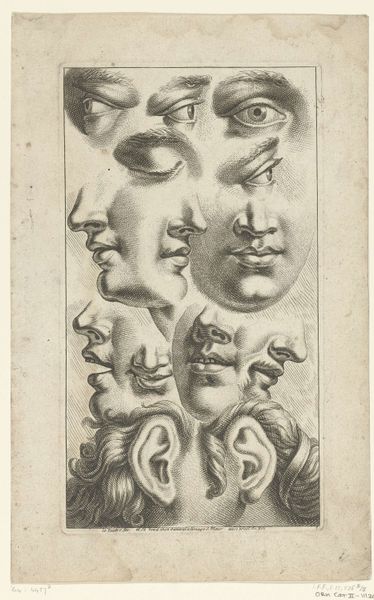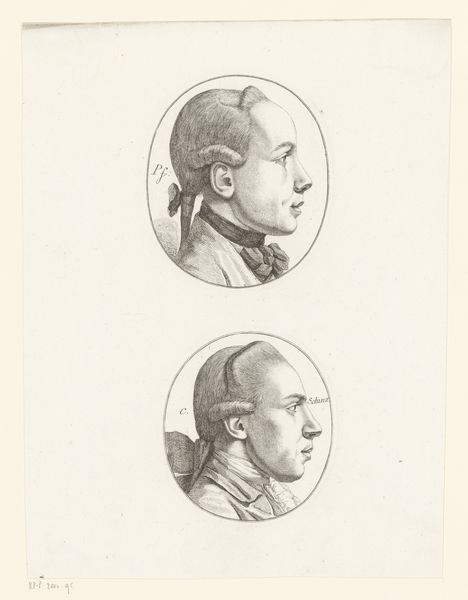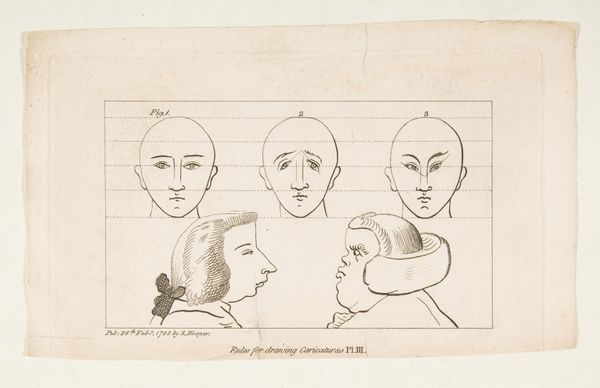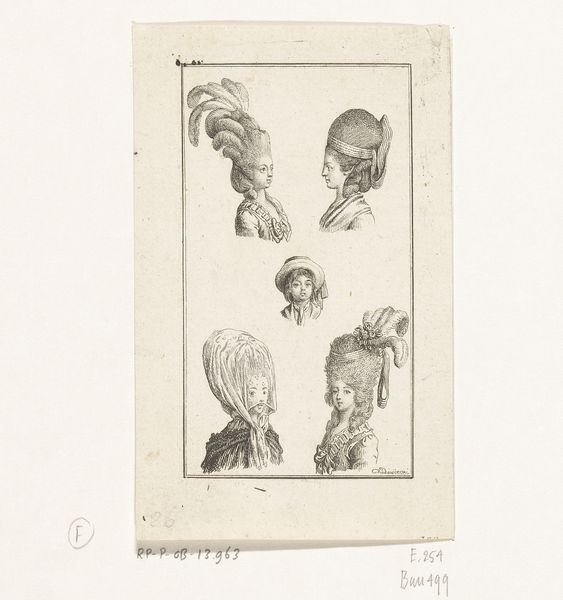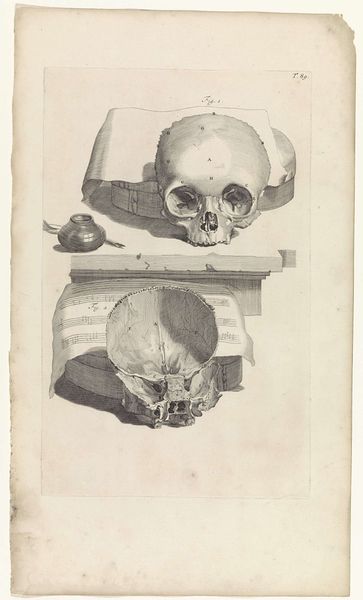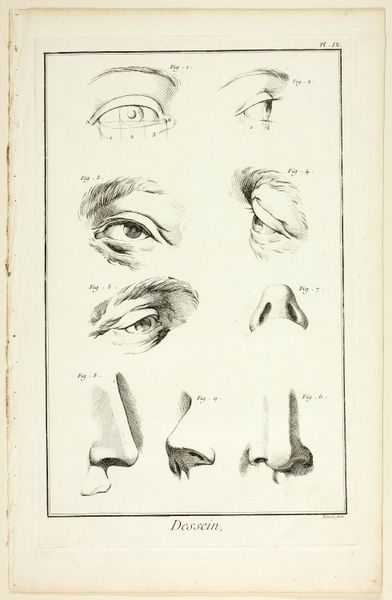
drawing, print, etching, paper, ink
#
portrait
#
pencil drawn
#
drawing
# print
#
etching
#
pencil sketch
#
paper
#
ink
#
history-painting
#
academic-art
Dimensions: width 277 mm, height 442 mm
Copyright: Rijks Museum: Open Domain
Curator: This etching by Pieter van Gunst, titled "Anatomische studie van het hoofd," dates back to 1685 and can be found here at the Rijksmuseum. Editor: It's stark, isn't it? Stripped bare in a way that feels almost brutally honest, yet softened by the delicacy of the etched lines. There's an arresting stillness. Curator: Absolutely. We see that in the late 17th century there's an increased scientific investigation coupled with, of course, long standing social proscriptions. So to have a print like this available made new forms of knowledge accessible. Think of how this might have circulated among medical students, or perhaps even educated laypeople interested in science! Editor: Yes, exactly! Even the arrangement of the two heads – one showcasing the skull and musculature, the other the brain – strikes me as deliberately symbolic. The unveiling, so to speak, of the self; progressing from exterior facade to interior mechanism. The almost symmetrical rendering of the brain’s two hemispheres gives me a peculiar sensation; suggesting perhaps some balance between the physical and intellectual aspects of man. Curator: That ties in nicely with the academic art context here. The anatomical study held significant importance and, given the nature of its circulation via printmaking, underscores the Enlightenment idea of democratization of knowledge, despite the hierarchies in accessing that information. This democratization inevitably altered medical education but also, how society understood the body. Editor: It's almost an early form of ID photography, an acknowledgement of what it means to *be*. Seeing this depiction of brain separated so starkly within the skull, reminds me also of traditional symbols. We see the broken container that contains hidden meaning that perhaps is only accessible in rare and, quite often, terrifying conditions. The work speaks to an intersection of our quest for knowledge but it has this eerie detachment too. Curator: Agreed. The cool detachment allowed viewers to digest the imagery, fostering critical inquiry while distancing them from some of the gorier aspects. Van Gunst seems quite conscious of making this less sensational and more of a measured intellectual endeavor. It is that duality – science and sensationalism that seems to capture that moment. Editor: Ultimately, for me, the impact remains in its symbolic power: a compelling exploration of mortality, knowledge, and self. Curator: For me, this highlights the intertwined development of visual representation, science, and society in the late 17th century, something not often accessible to museum-goers and audiences beyond, today.
Comments
No comments
Be the first to comment and join the conversation on the ultimate creative platform.
